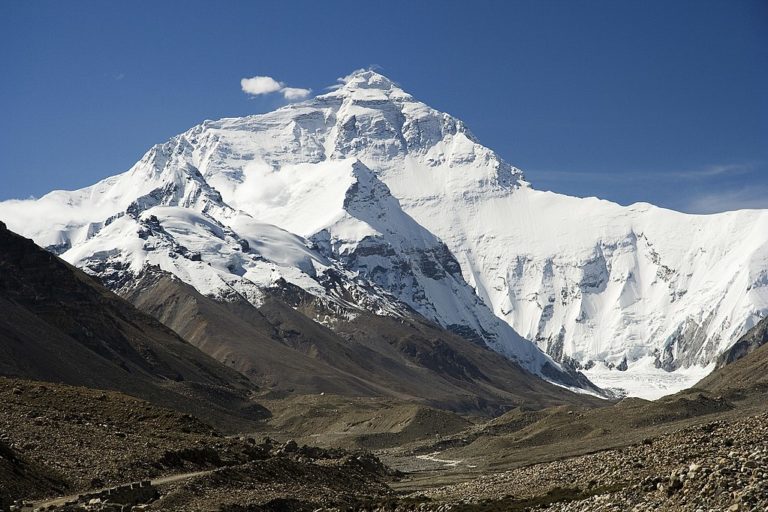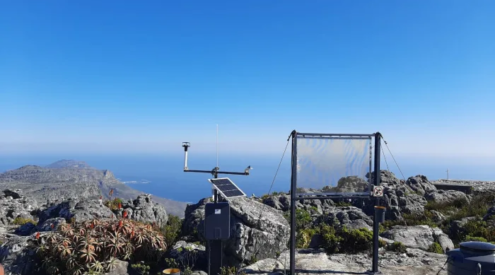Microplastics have been discovered just 400-metres below the peak of Mount Everest. This is the highest point on earth where they have been detected.
Preliminary findings from a new study published in the journal One Earth shows that microplastics have been detected in the Balcony of Mount Everest, 8,440-metres above sea level.

Scientists have discovered microplastics near the peak of Mount Everest. Picture: Wikimedia Commons.
‘Plastic pollution is a key issue of our time,’ according to the authors of the study, which is aptly titled ‘Reaching New Heights in Plastic Pollution‘.
Dr Imogen Napper, a researcher of plastics pollution and the study’s lead author, told The Independent that the microplastics could have arrived on the mountain because of the clothes and equipment used by explorers.
Alternatively, they could have travelled up the mountain on the winds blowing through nearby cities.
‘I think the most surprising bit for me was looking at the sample from the Balcony, which is just below the summit and seeing that there’s microplastics there,’ said Napper.
‘That means we’re finding it in the deep sea all the way to near the top of the tallest mountain on Earth, which is definitely eye-opening.’
Microplastics are small plastic pieces that are typically less than five millimetres long and negatively impact the natural world.
The study says that plastic litter is prevalent worldwide, even in remote areas and it is estimated that between 93,000 and 236,000 metric tons of microplastics now float on the global sea surface.
The researchers collected samples from snow and seawater in the Mount Everest region and found that the microplastic levels were highest at Mount Everest’s base camp.
They found about 79 microplastic fibres per litre of snow at the base camp, while they found 10 microplastics fibres per litre of snow at the Balcony.
‘It’s like a trail of breadcrumbs. Where people go, they are leaving a trail of microplastics,’ said Napper.
‘It could either be coming from people that are there or it could be blowing up the mountain from areas surrounding it, such as cities,” she added.
‘However, what we did find is that a lot of the materials were polypropylenes, polyester, acrylic and nylon, which are typically used to make a lot of outdoor gear that you would expect people on expeditions to use, such as their clothing, tents and ropes.
Over the decades, since Mount Everest’s popularity boomed in the 1990s, the mountain has accumulated old tents, fixed ropes, used oxygen bottles, human waste, tins, glass and paper discarded and left behind from previous expeditions, according to the study.
Everest has even been described as the ‘the highest trash dump in the world’. However, this study is the first effort to assess the microplastics pollution in the Mount Everest region thus far.
Microplastics are small enough to be ingested by wildlife, which is a cause for concern to Napper.
She says that the scale of impact of microplastics on the health of wildlife and humans is still an active area of research.
The study says that ‘there are not yet agreed-upon thresholds for microplastics that constitutes dangerous concentrations of microplastics for people, species, or the environment…’
‘Technological advances could minimize microplastic pollution from exploration,’ according to the study. Napper further explains this in her interview with The Independent by suggesting that we should start designing clothes in a more environmentally-conscious way.
‘Can we start designing clothes that are woven differently to shed less fibres?’
Picture: Wikimedia Commons

















